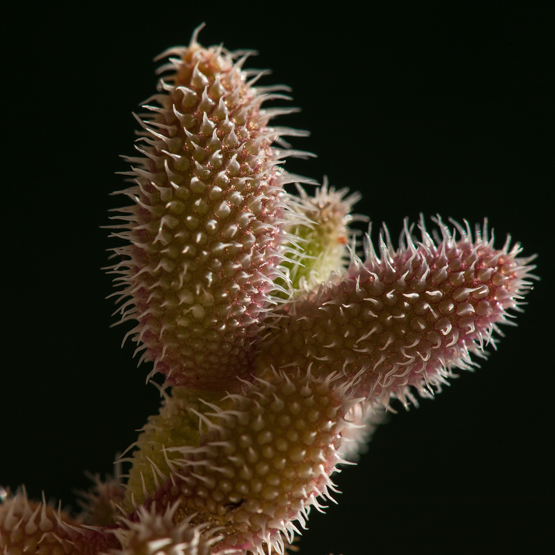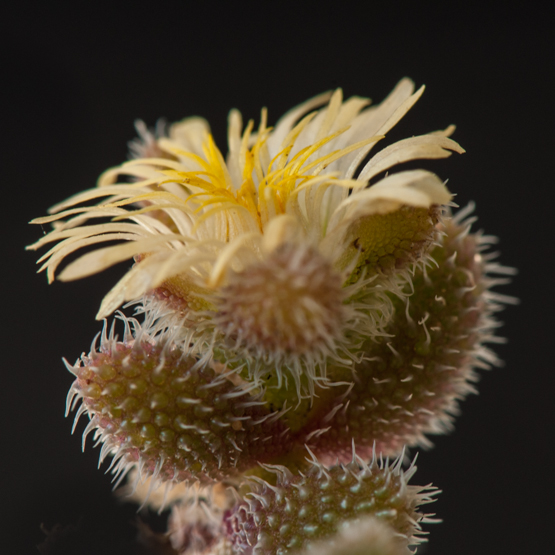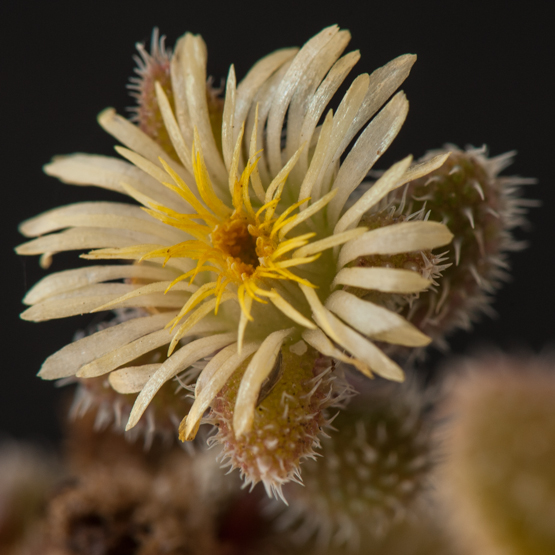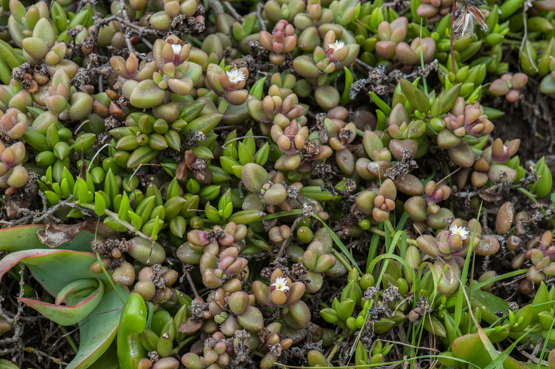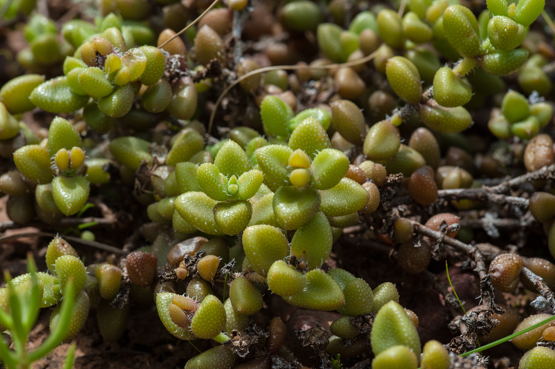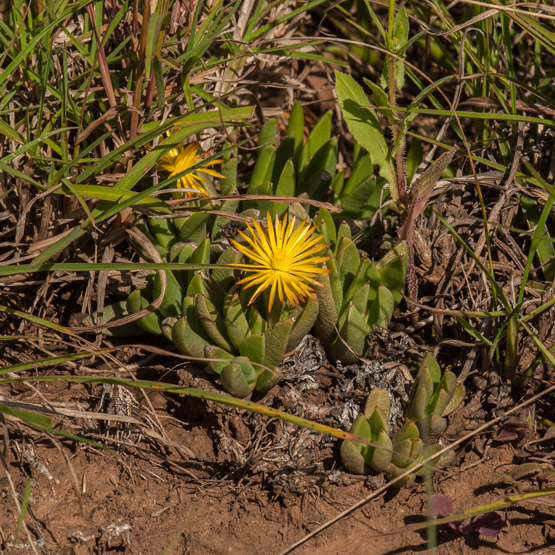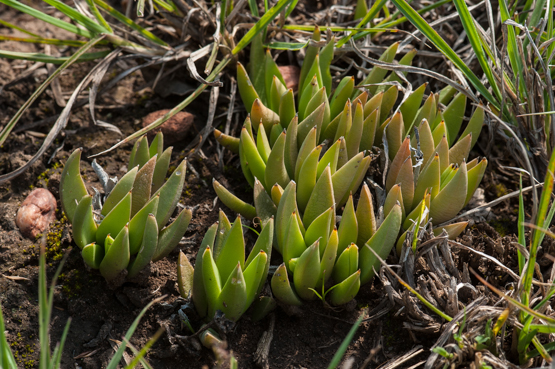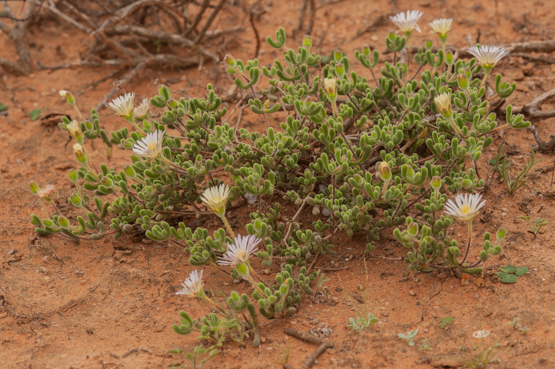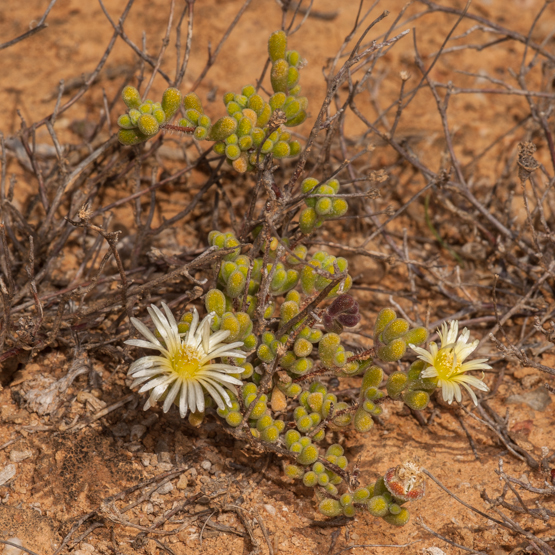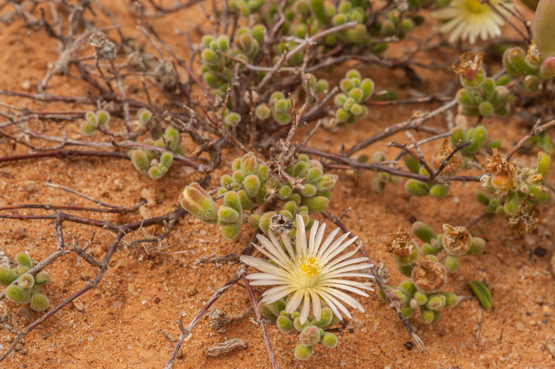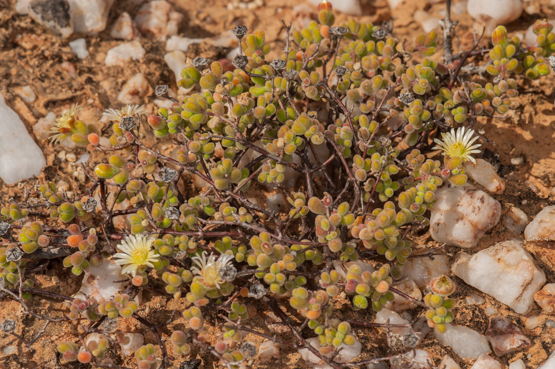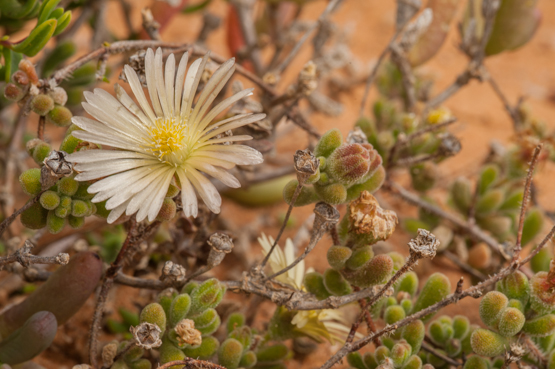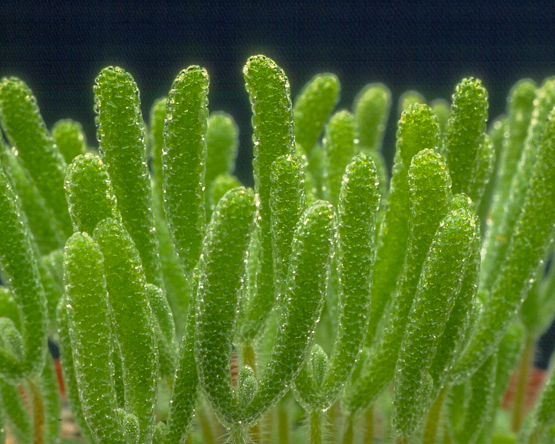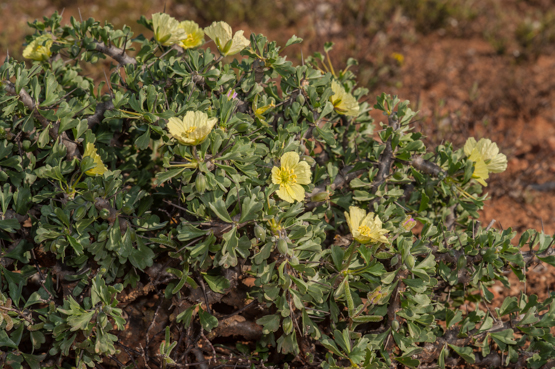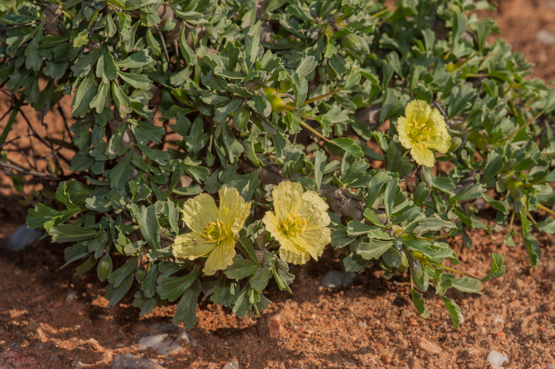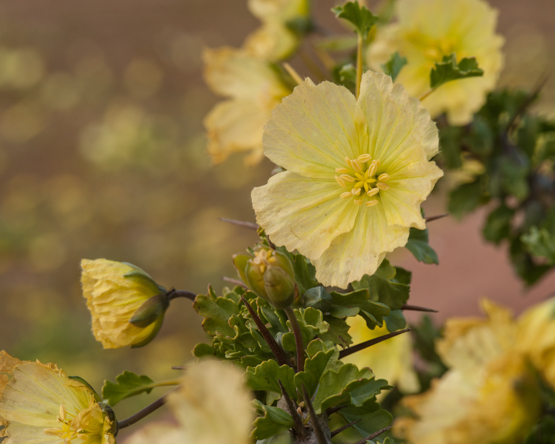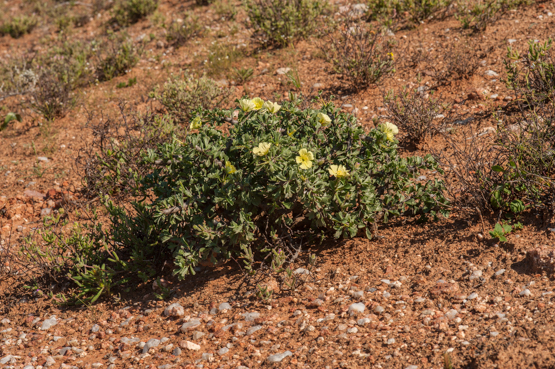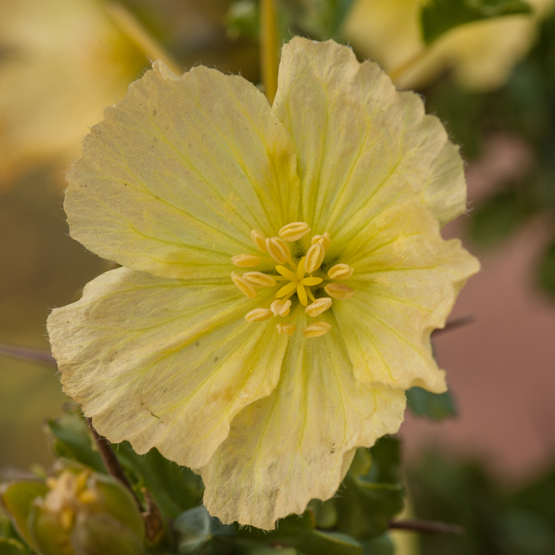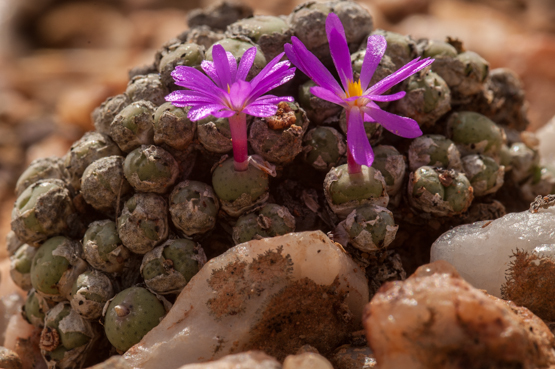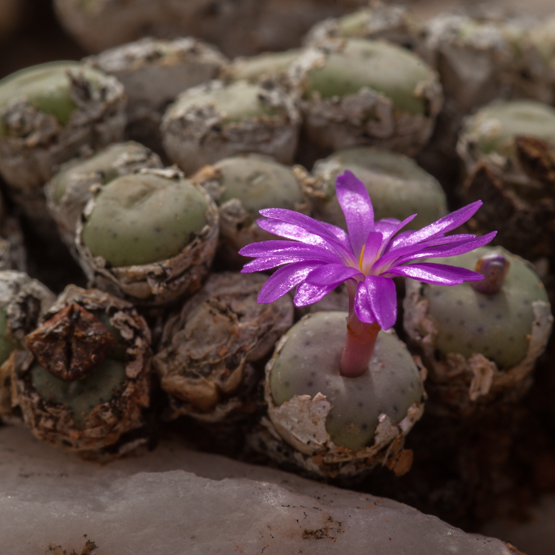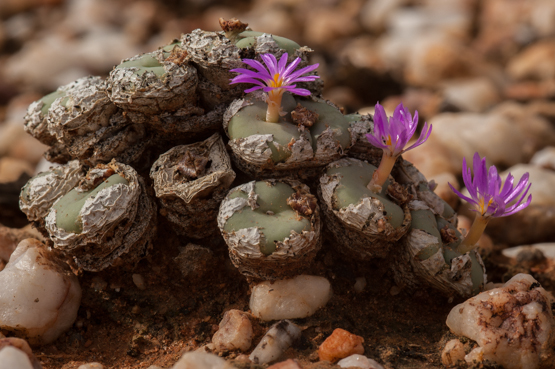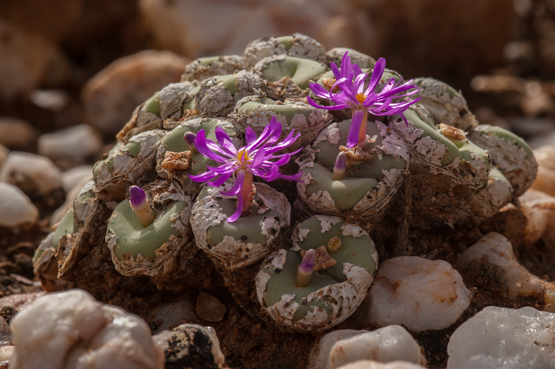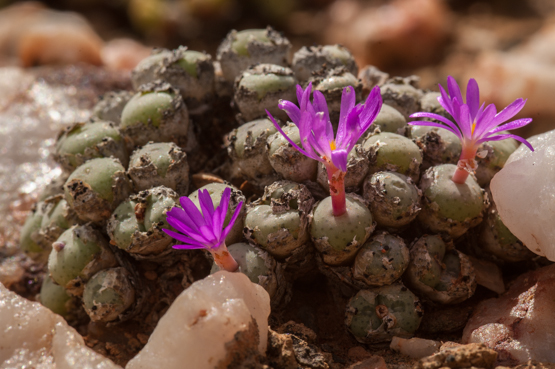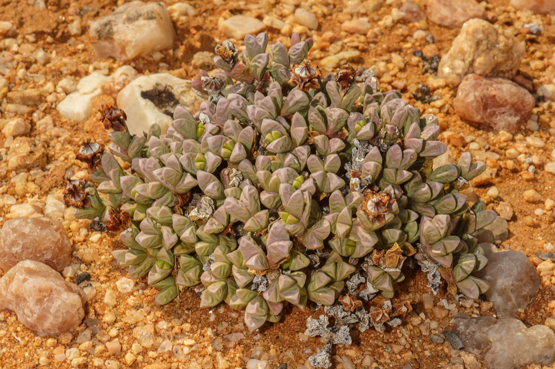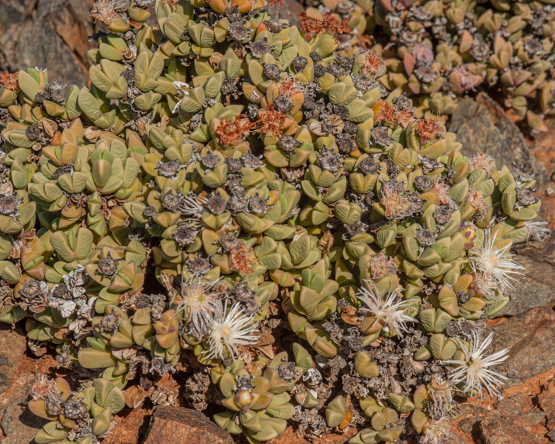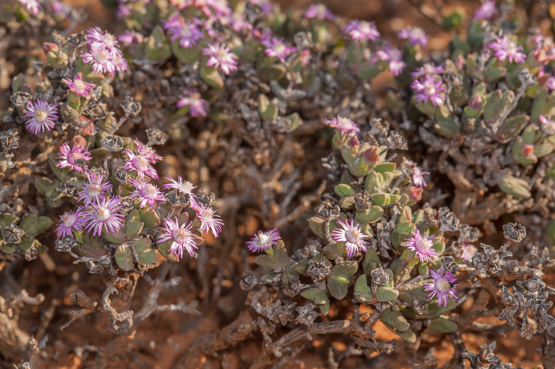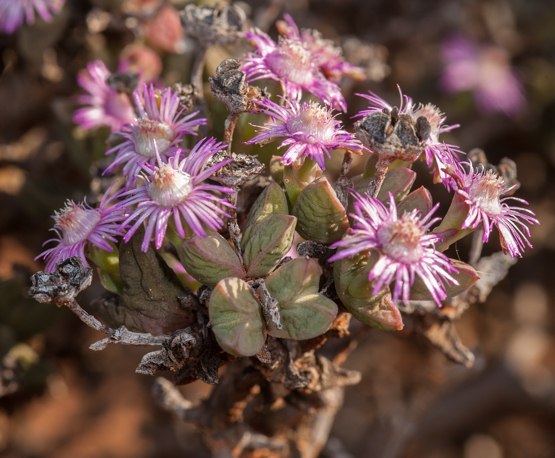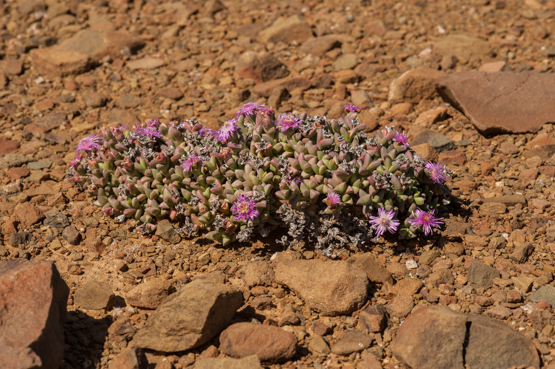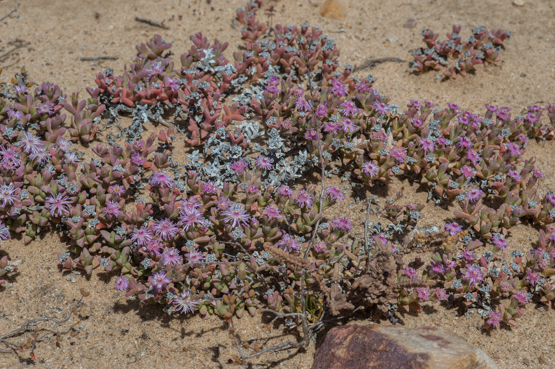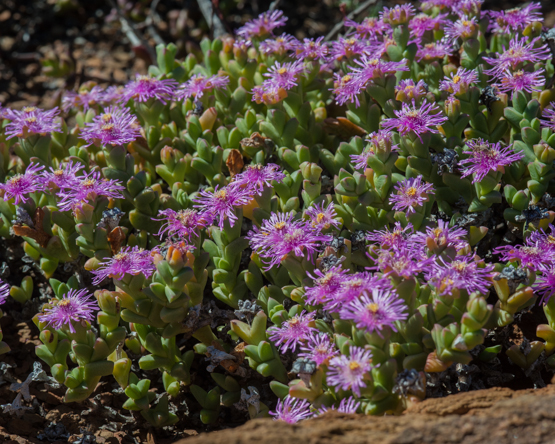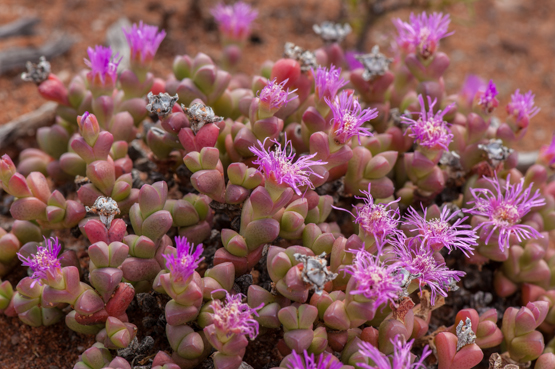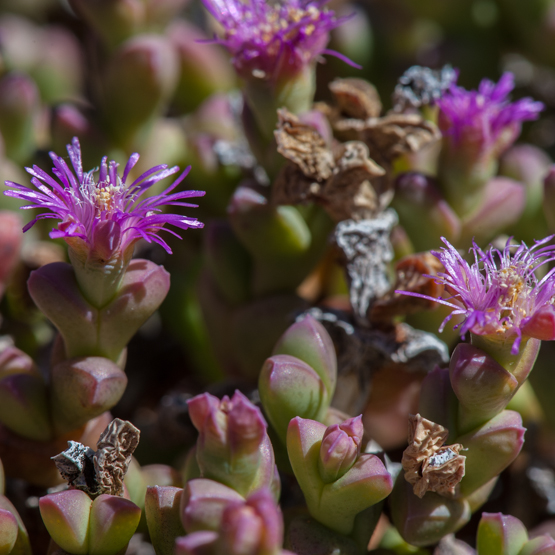I made these pictures a few days ago, as part of a presentation on plant photography I have to give at the end of the month.
Tag: South African succulents
Delosperma echinatum (1)
When I started growing succulents nearly sixty years ago (I can hardly believe it myself) this species was one of the first I encountered in a collection. It was very popular because of its beautiful leaves and its ease of cultivation. The fact that it did not need full sun -in contrast to most other succulents- was also much appreciated. A number of years ago the species got a new (or in fact an old) name: D. pruinosum. And look and behold, by the time we all had got accustomed to this one, the name was changed back to echinatum. Not that it is of any scientific importance of course, but that name, meaning with spines like a hedgehog, is a much more agreeable one. The hard papillae on stems and leaves are unique in the genus.
The plants occur as undergrowth in Valley Bushveld in the Eastern Cape, sometimes straggling into other shrubs. The flowers are 1.5-2 cm across and yellow or whitish. They appear mostly in spring, but also at other times of the year.
The photos in this post were made near Uitenhage on 26 October 2012. In the first picture you can also see Senecio radicans and a seedling of Aloe striata.
Bergeranthus multiceps
The genus Bergeranthus occurs in the Eastern Cape between Utenhage and East London and northwards to Cradock. The plants form tuft and have a fleshy rootstock. Flowers open in the evening or late afternoon.
B. multiceps is common in open grassland between Joubertina and the Keiskamma River. Rainfall occurs here in all seasons.
Drosanthemum schoenlandianum
Monsonia ciliata Part 2
Monsonia (Sarcocaulon) ciliata Part 1
This planr is only known from northwestern Namaqualand, where it grows in the coastal plain between the mountains and the sea, from Lekkersing southwards to Wallekraal. The plants are usually not taller than 18 cm. The flowers are about 3.5 cm in diameter and are characterized by the cilia along the rim of the petals. According to literature the flowers appear in March, September and in summer, but all but one of the pictures shown here and in the next post were made in July and August.
Conophytum minutum v. minutum (2)
Conophytum minutum v. minutum (1)
Plants of this variety occur widespread from Papendorp and Vanrhynsdorp in the south to Garies and Gamoep in the north and are also found at the coast, near the mouth of the Groenrivier. They grow on a variety of substrates, either in the open on in the shade of shrubby mesembs.
The flowers appear in autumn and range in colour from pale pink to reddish magenta and even (rarely) white.
All photos made on the same day (30 March 2012).
Polymita albiflora
The genus Polymita has only two members, both of which are slow growing shrubs up to 45 cm tall, starting out as small cushions. They occur on the eastern edge of the winter rainfall area in northern Namaqualand on gneiss hills and quartz flats or slopes.
P. albiflora occurs in the drier part of the distribution area: on average less than 100 mm rainfall per year. The species is characterized by the hard prickly mucro (leaf tip), which is absent in P. steenbokensis, and by the generally fewer number of petals (50-100 rather than 70-140). The literature only mentions white petals (as the name implies), but pink also occurs.
Unfortunately the plants rarely flower in cultivation.
Ruschia impressa
Some people seem think that the second part of this name means impressive, but in reality it means impressed. (Don’t ask me what it refers to!).
At first sight it just seems to be another one of those many small, nondescript shrubby Mesembs. Only when you take the time to look at it properly you will see how cute it really is. I quite agree with the remark in the Illustrated of Succulent Plants: “The compact shape suggests that the species has a potential as garden or rockery plants”.
The plants do not get any taller than 6 cm. Maybe the best way to recognize them is the fact that the keel of the leaves is adorned with a small (sometimes inconspicuous) tooth.
The species is endemic to the western part of the Little Karoo (Ladismith, Montagu).
